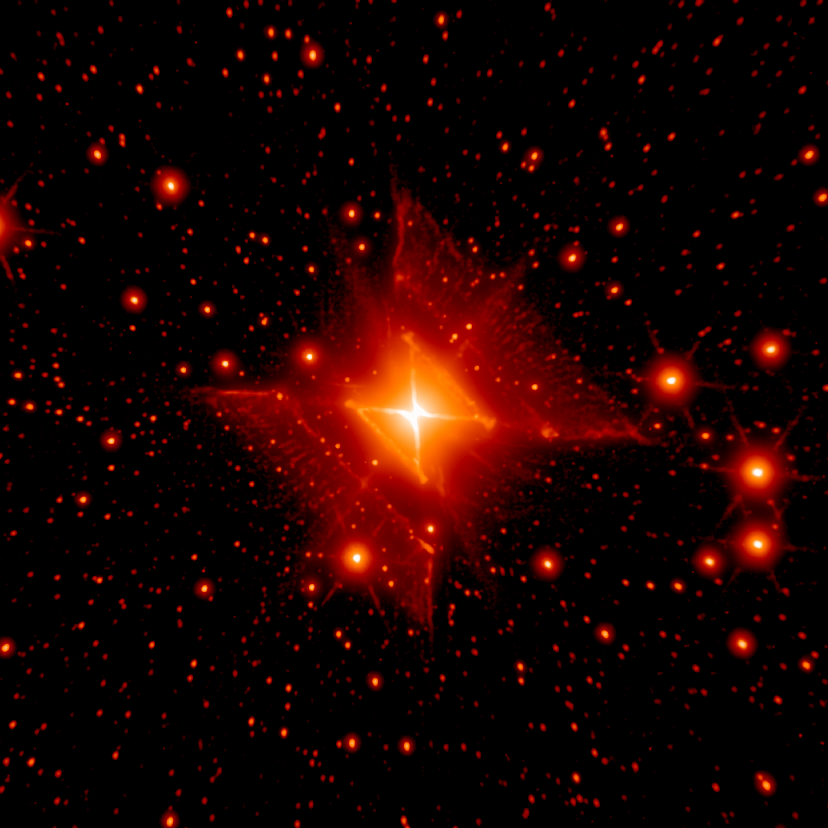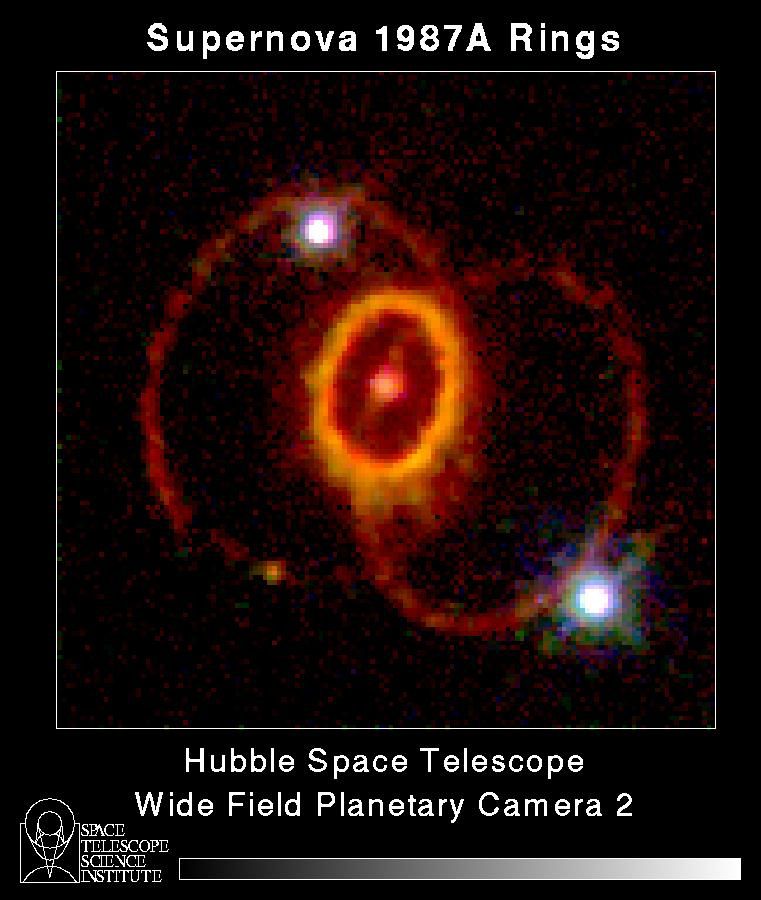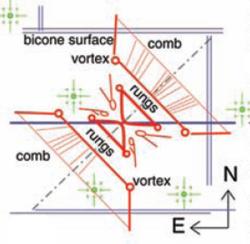The Red Square |
|---|
The Red Square |
|---|

This image (left) announces a new arrival in the pantheon of exotically beautiful celestial objects. We have christened this startlingly symmetrical nebula "The Red Square" for its color and form, and also in recognition of its close cousin - the celebrated Red Rectangle nebula.
The new discovery was made with advanced imaging technologies known as Adaptive Optics while studying a hot star called MWC 922 located about 5000 light-years from earth in the constellation Serpens (the serpent mythologically associated with medicine). The image to the left, which combines data from the Mt Palomar Hale telescope and the Keck-2 telescope , was taken in near-infrared light (1.6 microns) and shows a region 30.8 arcseconds on a side around MWC 922. As the outer periphery of the nebula is very faint compared to the core, the image has been processed and sharpened to display the full panoply of detail and structure.
The startling degree of symmetry and level of intricate linear form make the Red Square nebula around MWC 922 the most symmetrical object of comparable complexity ever imaged. The overall architecture displays a twin opposed conical cavities (known as a bipolar nebula), along the axis of which can be seen a remarkable sequence of sharply defined linear rungs or bars. This series of rungs and conical surfaces lie nested, one within the next, down to the heart of the system, where the hyperbolic bicone surfaces are crossed by a dark lane running across the principle axis.
One particularly fascinating feature visibile in the images is a series of faint radial spokes, like teeth of a comb, pointing away from the center. Structures such as this are rarely seen in nebulae, and the high degree of regularity in this case may point to the intriguing possibility that these bands are shadows cast by periodic ripples or waves on the surface of an inner disk close to the star at the heart of the system.
Perhaps the most compelling implication from the discovery of such a cleanly-constructed polar ring system comes when we consider the three dimensional structure implied by the Red Square images. If we imagine moving away from the precise (and fortuitous) edge-on viewing angle onto this object that we find from Earth, we might get a view like that depicted below. The left-hand panel shows the skeleton of the twin opposed cones as we see them from earth, but if we rotate away from our view at 90 degrees to the axis (middle panel) we can visualize that the bright bars seen edge-on become elliptical rings encircling the polar axis of the system (right panel).

Keeping in mind this geometry, it is interesting to take a second look at one of the most famous astronomical images of them all: the beautiful and unexpected ring system revealed around the only naked-eye supernova in the last few hundred years - SN1987A. To the left we show a view of the supernova as seen by the Hubble Space Telescope . Could the star MWC 922 at the heart of the Red Square one day explode as a supernova, kindling the outer reaches of its nebula into such an incandescent display? We don't know yet for sure, but one thing is certain. The remarkable series of bars seen in the Red Square may make it the best astrophysical laboratory yet discovered for studying the physics of generating the mysterious sharp polar ring systems like that around SN1987A.
The Research Team:
Peter Tuthill is a reasearcher in the
School of Physics at the University of Sydney, Australia.
James Lloyd is an assistant professor at Cornell University Astronomy Department.
These links are for download of images and press release materials:
Image file (1000px gif format).
Large high-quality image file (3000px tiff format).
Large high-quality image file (3000px jpeg format).
Sydey press release (microsoft doc).
Sydey press release (no images microsoft doc).
Coords: RA/Dec = 18:21:15.9 -13:01:27 (J2000) V=14mag
Image Credit Red Square images: Peter Tuthill, Sydney University Physics Dept
Palomar and W.M. Keck observatories
This research appears in:
For an
ABSTRACT of the paper, click here (link to SCIENCE)
For
FULL TEXT of the paper, click here (link to SCIENCE)
For a television segment aired on National TV in Australia
click HERE
(AVI format you may need DivX to play this)
Numerous popular press sories are archived
HERE

The sketch to the left, taken from the Science paper, may help to identify and label some of the features discussed above.
This research was supported by grants from the
Australian Research Council
and the
US National Science Foundation
Stellar Astronomy and Astrophysics Program.
For more information, contact: Dr Peter Tuthill